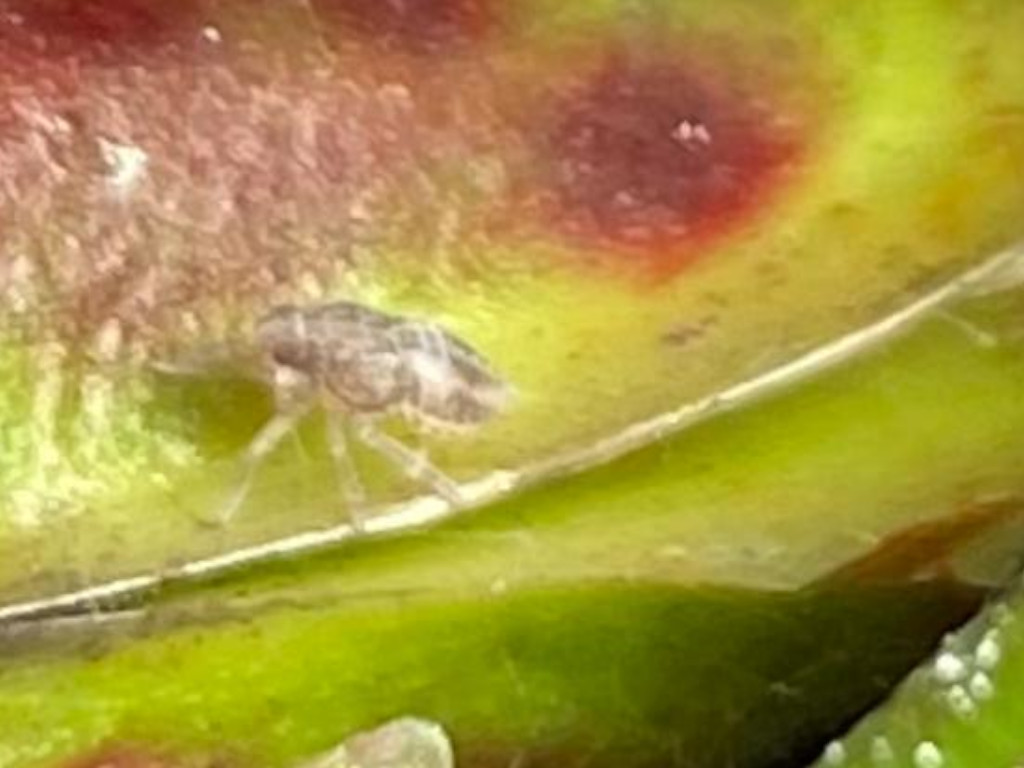Carnivorous Plants may eat insects, but there are still a few that can get their own back! There are biological and organic controls that can be used, but it is alright to use any spray recommended for plant use. Just follow the instructions, and only spray in early morning or the evening.
Aphids (Greenfly)
Can do a lot of damage and cause distortion, especially in early spring. On large plants like Sarracenias, it is possible to wipe them off the new leaves with a finger. With small plants like Venus Fly Trap and Sundews, the aphids can over winter in the plant and do a lot of damage before the leaves come up.
Sometimes you cannot see any insects, but may have tiny white sheddings of their skins, and a sick looking plant. This will be aphids.A systemic insecticide is the best way to deal with them, or submerge the whole plant for a couple of days. Soft soap in another organic method of dealing with them.
We do have a native parasitic wasp, which we encourage in our polytunnels -it is often found on stinging nettles. Look for a parisitised aphid, which will look like a pale brown scale, It will hatch into a wasp. However, it is best kept away from Butterworts and Sundews, as they will catch them.
Botrytis
This is the fluffy grey mould similar to the one you get on mouldy strawberries. It tneds to starton dead growth, so good husbandry is a way to prevent it. Botrytis is something to watch for particularly in spring and autumn on Sarracenias and Venus Fly Traps. Some species and hybrids are more prone to it than others. Remove dead foliage regularly, provide plenty of air movement around the plant, especially in still, damp weather in March, April as the plants come back into growth. Spray with a fungicide if necessary. If botrytis is found, cut out infected area with a sharp knife and dispose of all infected plant waste. Remove petals from old flowers. They can fall into the crown of the plant and cause botrytis.
Mealy Bug
Mealy bug are found deep in the leaf axils or tucked on leaf ribs. They are a small white fluffy mass with a pale pink insect within the wool. Very damaging, and will weaken the plant. Spray a systemic insecticide, or dab each insect with a paintbrush dipped in methylated spirits or alcohol. Not a huge problem, but most likely found on Darlingtonia, Sarracenia and Nepenthes.
Slugs, Snails and Caterpillars
Not a huge problem, but just one can create quite a few holes in a Sarracenia. The little green caterpillars can be particularly difficult to see. Just keep hunting a this is the best way to get rid of them. Slugs can occasionally be the prey of Sarracenia purpurea ssp purpurea, so its not all bad.
Scale insect
These are small brown blister like insects, around 1-2 mm long, often found with sooty mould growing on the honeydew caused by the scale. We find Sarracenia psittacina to be susceptible. Spray a systemic insecticide, or dab each insect with a paintbrush dipped in methylated spirits or alcohol.

